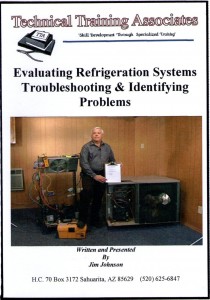After some unsuccessful attempts at correction, college officials finally considered the 28-year-old pool building for adaptive reuse. Plans for a new multimillion dollar edifice were initiated. However, an advisory consortium led by consultant Robert M. Stafford Inc., (Columbia, SC) convinced college officials to embrace a more economical solution.
Stafford's project architect, Blount Shepard, added the technical advice of indoor pool IAQ expert, Stephen Kelly, The Kelly Group (Charlotte, NC); mechanical contractor, Cullum Constructors (Charleston, SC); and engineers from IAQ manufacturer, Dectron International (Roswell, GA). Shepard proposed renovating the deteriorated parts of the building, installing a state-of-the-art dehumidification system and redesigning the hvac air distribution for a project cost of $1.7 million - a considerable bargain when compared to erecting a new structure.
Posh Pool Party Possibilities
The consortium was so confident of reversing the building's IAQ woes that it promised the college it could hold social events in the natatorium, which, aside from its many IAQ problems, was an aesthetically pleasing area with three walls of windows.The original hvac design of the 47,000-sq-ft, four-level Stern Student Center combined a makeup air unit with the college's central plant steam and chilled water loops. Since the original design inefficiently called for large amounts of exhaust air, an add-on desiccant system was installed seven years ago to recover energy. However, it failed to operate correctly and was disconnected after six months.
R.M. Stafford first entered the project with a moisture infiltration investigation and later became the engineering/architectural firm for the repair project. In addition to coordinating the hvac redesign, R.M. Stafford also designed the replacement roof system and cladding of the parapet wall; replacement of the copper batten seam roofing and siding panels; repair of the exterior brick veneer, flashing, and control joints; and coordinated the replacement of the deteriorated pool equipment.
With the building's envelope tightened, Kelly and the mechanical contractor, Cullum Constructors, went to work updating the hvac system. Anchoring the hvac's redesign is a Dectron Dry-O-Tron(tm) Model RS-362, which was carefully located on a loadbearing position on the low slope roof. The 28,000-cfm, 400-lb/h makeup air dehumidifier recovers energy to heat the 25-meter, six-lane pool's water, plus it also heats, cools, and provides outdoor air to the natatorium space.
Equal Air
The unit was sized to flexibly accommodate three functions-general swimming, swim meets with 250 spectators, and social events. Typically, pool spaces have a two-degree differential between the air (84°F) and pool water (82°) temperature. However, bringing the air temperature down to 76° for occasional social gatherings puts an exceptionally high load on the dehumidifier that Kelly calculated into the project's equipment sizing.Accommodating such a wide differential presented many challenges in sizing, but operational interfacing with the campus' automated control system by Siemens Building Technologies (Buffalo Grove, IL) solved the problem. "We ordered the pool heat exchanger with a bypass, plus the airside coil and condenser for 100% heat rejection," said Kelly. "Getting all these functions interfaced with the building automation system presented some difficult programming. We've specified Dectron dehumidifiers for over 30 pool projects, but this unit certainly had the largest array of custom components and functions."
Dectron even custom-painted the unit and the outdoor condenser a sand-beige color to integrate better with the building's exterior materials-all of which complied with Charleston's strict historic district criteria. Additionally, natatorium retrofits are difficult because an existing building offers no space for new air distribution ductwork. R.M. Stafford, however, found a fourth floor storage closet space that would serve as a supply/return duct chase for the rooftop unit.
Concealing ductwork in a dropped ceiling, routing it around existing steel bar joints, and fabricating custom, flat oval aluminum ductwork was Cullum Constructors' most difficult installation challenge, according to project manager, Robby Beaver. Special scaffolding was erected to navigate in and around the pool area during the duct and ceiling installation.
Kelly and Cullum designed the duct to blow conditioned air down evenly on the facility's three walls of glazing. "The southern wall's greenhouse and balcony-level sliding glass doors give the natatorium a wonderful aesthetic as well as a visual gateway to a lush, adjacent courtyard," said Shepard. "Previously none of this could be seen because the windows were constantly covered with condensation."
Another Kelly innovation was the correction of poor locker room IAQ with a Dectron Model DK-60 100% outside air makeup air dehumidifier, which simultaneously recovers heat to preheat 240,000 gal/yr of shower water at an annual savings of $1,850. When unoccupied, the locker rooms are cooled or heated via the campus' chilled water loop or steam loop. When moisture levels rise due to locker room use, a humidistat activates a compact vertical Dectron dehumidifier that was installed in the cramped space of the original mechanical room.
Available space for redistributing the locker room air could have been problematic if the pool hadn't originally been built on columns and beams because of Charleston's high water table. Thus, Cullum Constructors was able to install two of The Trane Company's (Tyler, TX) chilled water/hot water air handlers and ancillary ductwork in a 6-ft-high crawl space below the bottom of the elevated, monolithic concrete pool. The air handlers distribute the conditioned air from the Dectron dehumidifier to each respective locker room.
"The difference in the facility before and after the renovation is like comparing apples to oranges," said Bruce Zimmerman, College of Charleston swim coach. "Previously the walls and windows dripped constantly with condensation, the smell of chlorine was very evident, and the locker rooms were either too hot or too cold. Now it's a very comfortable facility with 49% relative humidity and constant air movement." Not bad for a facility once destined for "adaptive reuse." ES







